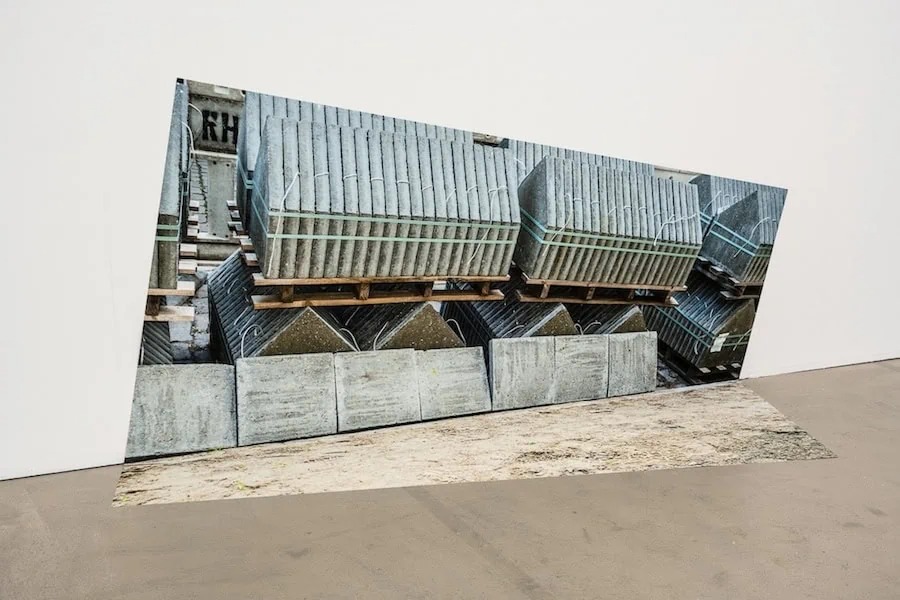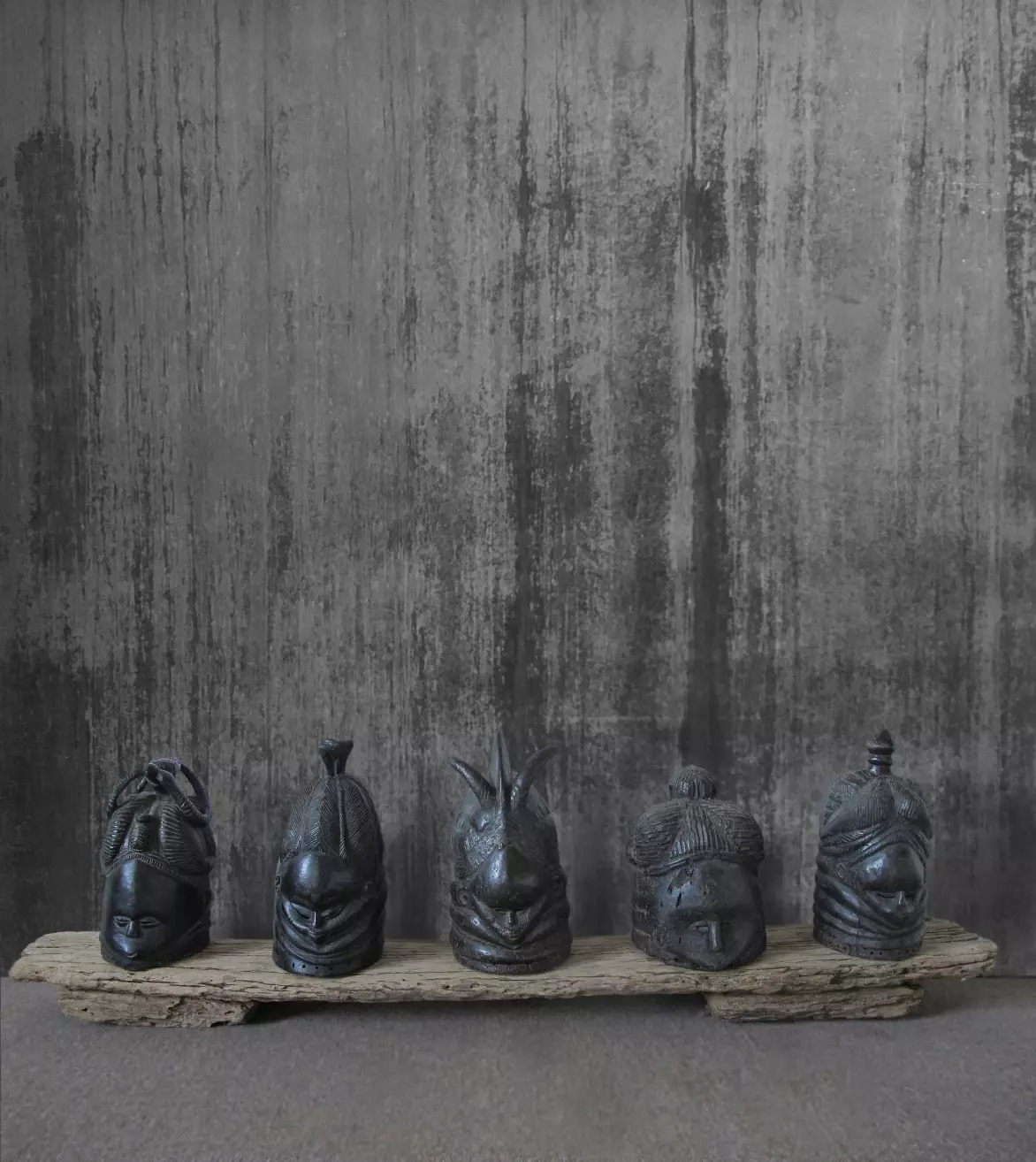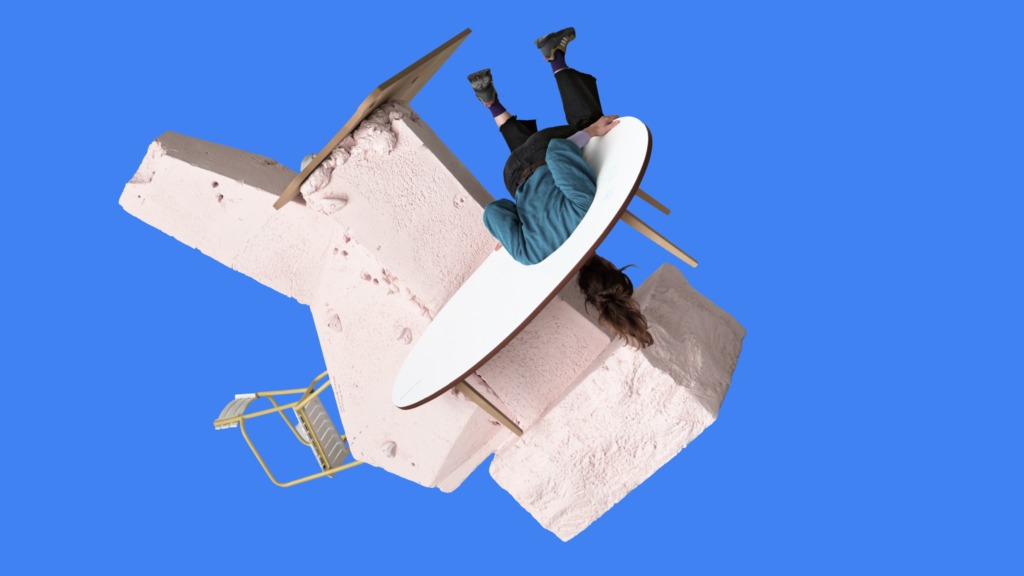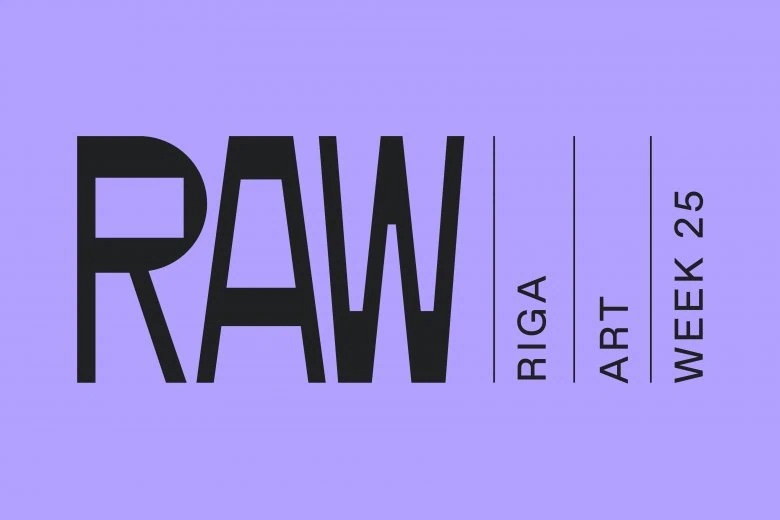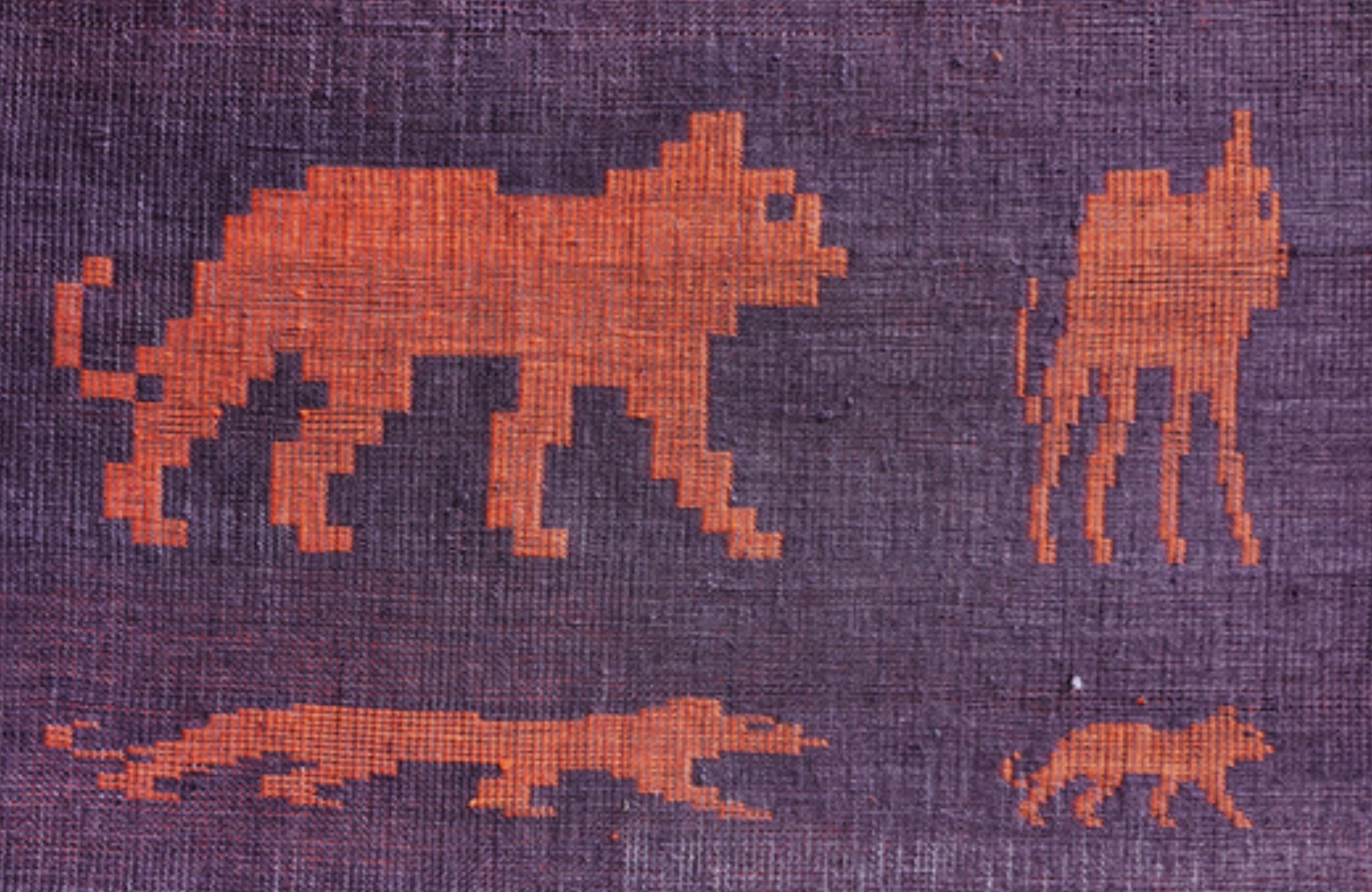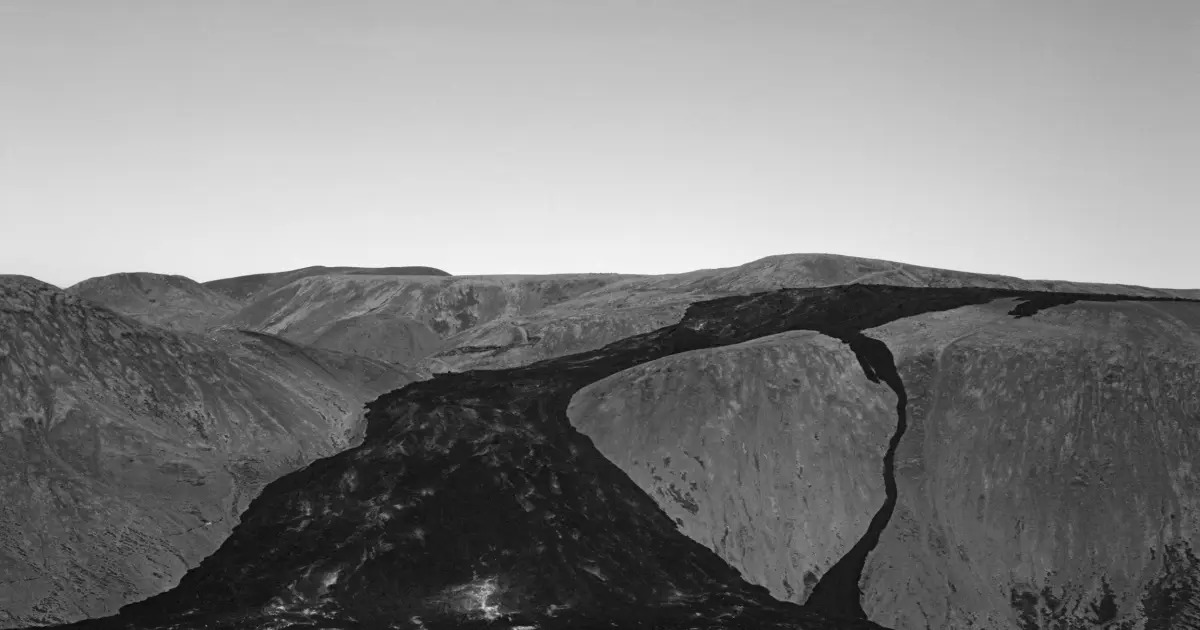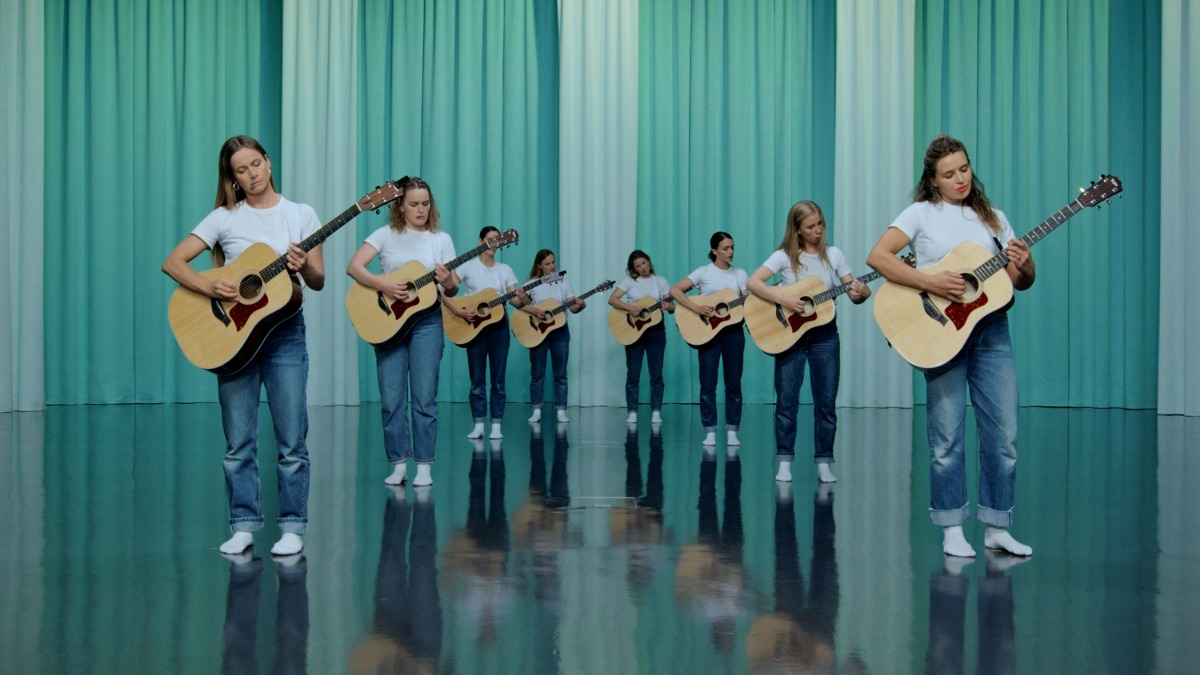
What to see in the Baltics
Must-see art exhibitions in May-June, 2025
The 19th Tallinn Print Triennial and the Riga Photography Biennial NEXT 2025 — these are the heavyweights of the upcoming two months. But there are plenty of other surprises and discoveries in store for us as well. For the first time, Riga will host the Riga Art Week (RAW). What it will be like — we’ll find out very soon. And in the second half of June, visitors to Vilnius’s Contemporary Art Centre (CAC) will be able to see the highly topical project Borders are Nocturnal Animals, previously presented simultaneously at KADIST Paris and the Palais de Tokyo in autumn 2024. But here is the full list:
ESTONIA, Tallinn
Kumu Art Museum
Ragnar Kjartansson, A Boy and a Girl and a Bush and a Bird, 2025, two-channel video installation with sound, duration 44 minutes. Courtesy of the artist, Luhring Augustine, New York and i8 Gallery, Reykjavik
Ragnar Kjartansson. Boy and girl and bush and bird
16 May – 21 September
The first Estonian solo exhibition of the Icelandic video artist and painter Ragnar Kjartansson (b. 1976) consists of six large works from 2004–2025. A Boy and a Girl and a Bush and a Bird provides insight into the oeuvre of one of the most fascinating and idiosyncratic artists in the contemporary international art scene. His art has been influenced by pop music, recent and classic art history and, in a less straightforward way, by political upheavals. Although his works are highly conceptual, i.e. full of cultural connotations and quotes, Kjartansson’s oeuvre is truly affective, touching the viewer strongly and very intimately.
Eglė Budvytytė in collaboration with Marija Olšauskaitė and Julija Lukas Steponaitytė. Songs from the Compost: Mutating Bodies, Imploding Stars. 2020. Video still. Courtesy of the artist
They Began to Talk
Until 3 August
They Began to Talk is an international group exhibition, which takes the intertwinement of the body and the environment as its point of departure, in an era marked by rapid environmental change and inequality. Sudden changes in the physical environment, often caused by human activity, can evoke mental suffering in land-based communities. Stored in the body, this trauma is passed on to future generations, who perceive it as an interruption in their relationship with their surroundings. The exhibition brings together the practices of artists working in this region with those from indigenous communities in the Nordic countries, exploring the possibility of recovering and cultivating a sense of connection.
They Began to Talk continues the Kumu Contemporary Art Gallery’s programme of exhibitions on environmental themes, which began in 2023 with Art in the Age of the Anthropocene. Artists: Pia Arke, Eglė Budvytytė, Merike Estna, Sofia Filippou & Eline Selgis, John Grzinich, Joanna Kalm, Johann Köler, Ruth Maclennan, Outi Pieski & Biret Haarla Pieski & Gáddjá Haarla Pieski, Mia Tamme, Sasha Tishkov, Vive Tolli.
Tallinn City Gallery
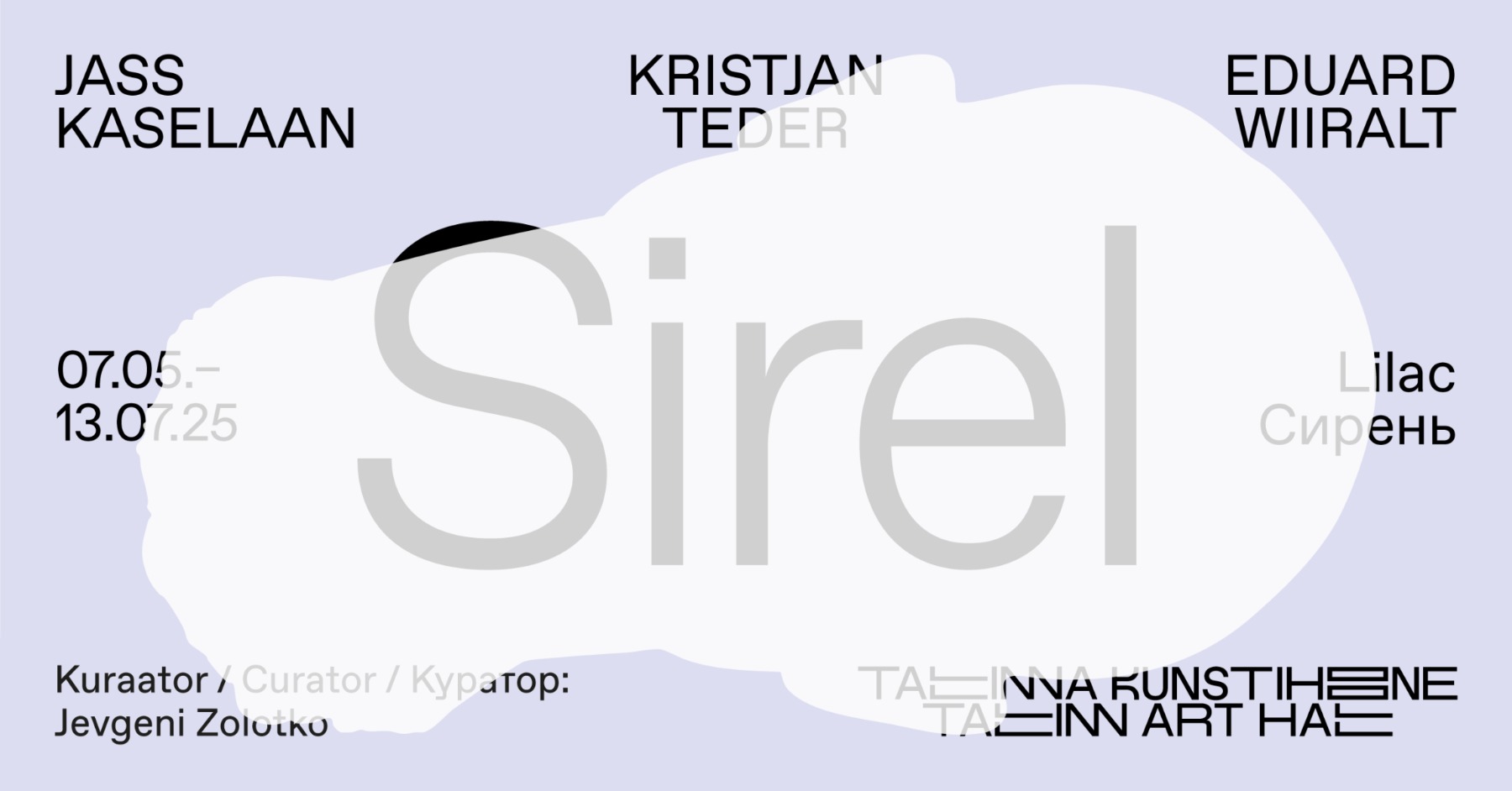
Kaselaan, Kristjan Teder, and Eduard Wiiralt. Lilac
Until 13 July
This is artist Jevgeni Zolotko’s curatorial debut , bringing together lesser-known works by Jass Kaselaan, Kristjan Teder, and Eduard Wiiralt.Jevgeni Zolotko approaches art and the artist, creation and life, with an equally demanding measure – one that arises from the kinds of choices that tend to vanish within comfort zones. He is unmoved by narratives tailored for the masses, focusing instead on the individual’s struggle within a society where patriotism, political manipulation, and power structures often override the person. As a deeply thoughtful and probing artist, Zolotko assembles the overarching vision of his exhibitions from individual life stories, allowing broader social and historical patterns to emerge through them. He assembles exhibitions by blending the roles of artist, curator, designer, and dramatist – treating his chosen figures with empathy and affection, facing the crushing course of history with pain and, often, a sense of hopeless defiance.
Of the exhibition Lilac, which brings together works by Eduard Wiiralt, Kristjan Teder, and Jass Kaselaan, Zolotko says the following: “Through the expressive – and at times contradictory – works of these artists, a nuanced whole takes shape, centred on the fundamental choices a person faces: the tension between anonymity and individuality, the one and the many, the original and the copy.” The exhibition will remain open until 13 July 2025, at Tallinn City Gallery (Harju Street 13).
Kai Art Centre
Renewable Energy II. 2025. Oil on canvas, 200 x 250 cm. Photo: Stanislav Stepashko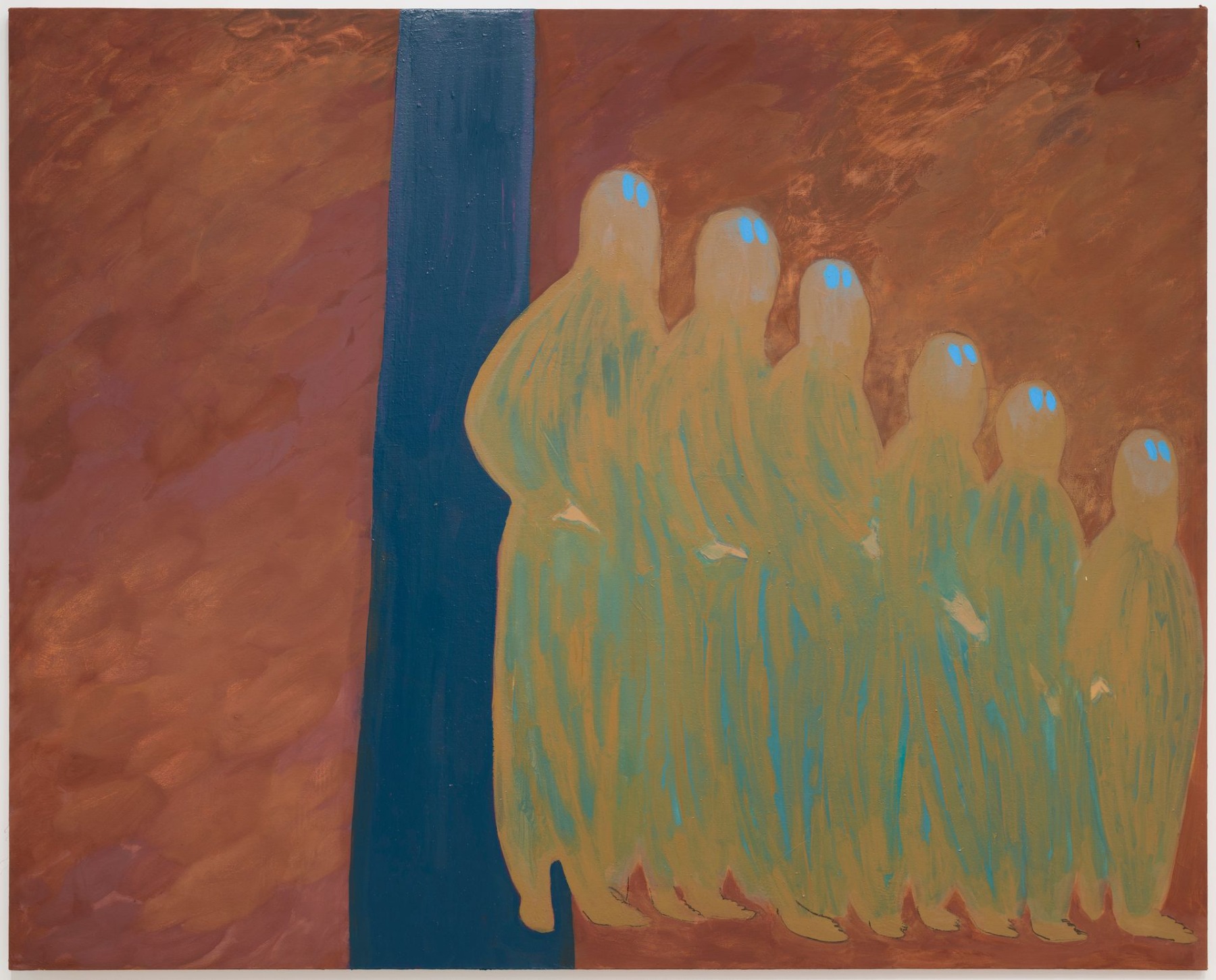
Flo Kasearu. BANANA – Build Absolutely Nothing Anywhere Near Anyone
Until 3 August
Flo Kasearu’s solo exhibition BANANA – Build Absolutely Nothing Anywhere Near Anyone, curated by Kari Conte, explores the dynamics of public and private space through the lens of the NIMBY (Not In My Backyard) phenomenon. BANANA invites visitors to engage in discussions about urban and rural development, public participation, local values, and property rights. Offering visual, auditory, and tactile experiences, BANANA combines installations, paintings, video, photography, and sculpture.
In BANANA, Kasearu asks: What is a community’s responsibility to the greater good when development reaches its doorstep? At community boards and meetings around the world, neighbors debate what, where, and who can build—whether it’s housing, renewable energy, transportation projects, or other forms of infrastructure. Regarding specific proposals, some individuals align with NIMBY views, while others back YIMBY (Yes In My Backyard). Typically, NIMBY perspectives regard development as negative or harmful—regardless of whether this perception is justified—while YIMBY supporters see development as beneficial for society as a whole, although this is not always the case. Over 50 newly-commissioned and recent works exploring these timely ideological and political disagreements are on display at Kai.
EKKM
"Creature" by Alina Kleytman 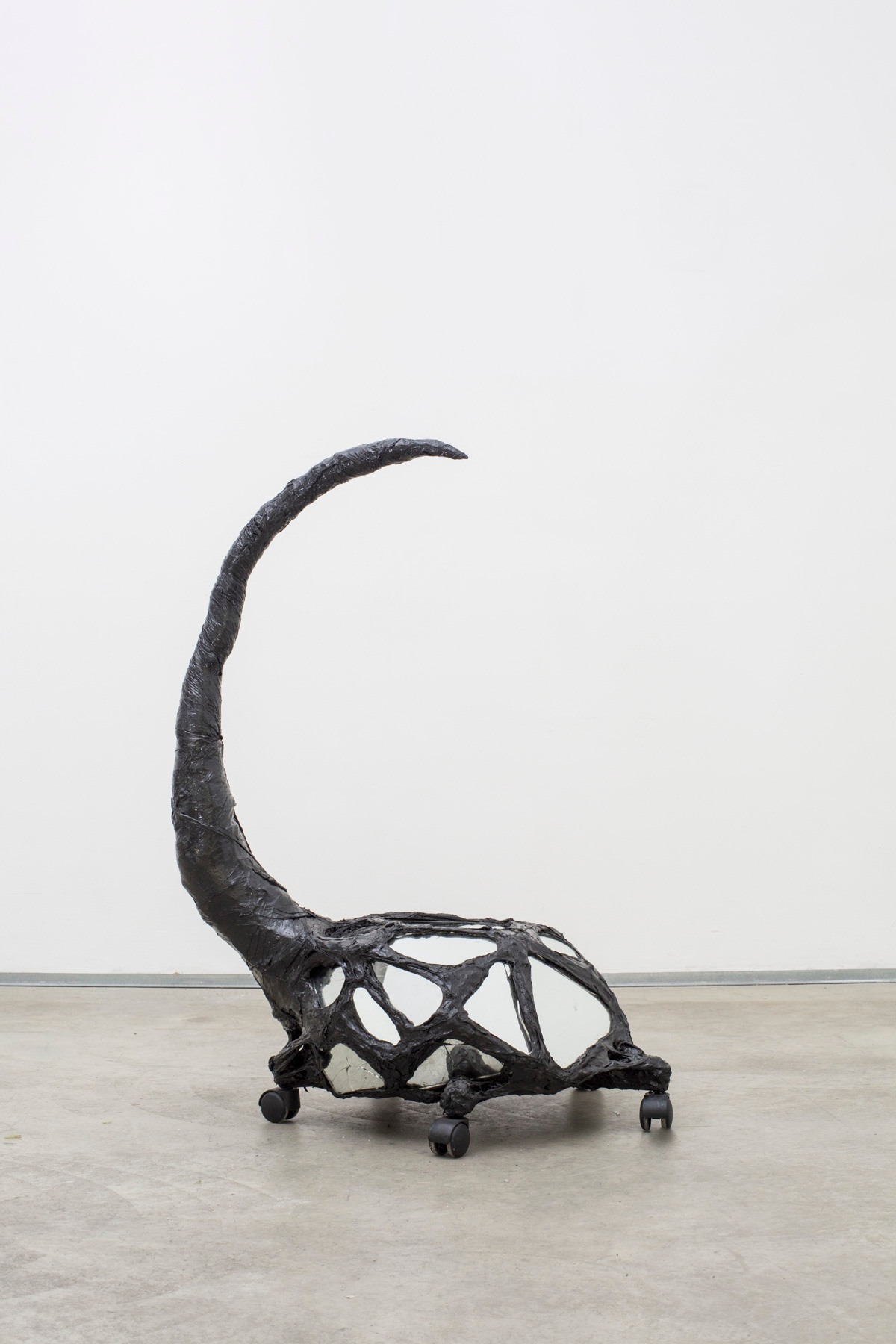
Rooms in Rhymes
Until 1 June
This spring, the exhibitions of the collaborative project Rooms in Rhymes by seven curators are on view at EKKM. Each week a new exhibition by one of the curators replaces another on one of the museum floors, thus forming a rhythmical and fluctuating whole of displays throughout the museum building. The exhibition spaces designed by different curators are not necessarily expected to rhyme with each other, but it is perhaps in between the lines that something starts to resonate, creating space for potential f(r)iction. The exhibition experiments with curating as a form of poetic, performative and collective practice. Invited by EKKM’s in-house curator Evelyn Raudsepp, the extended group of curators is formed by EKKM’s team members usually carrying out different roles at the museum, and creatives who have previously worked with EKKM: Anita Kodanik, Brigit Arop, Johannes Luik, Laura De Jaeger, Laura Linsi and Marten Esko.
Curator Anita Kodanik (9.05–25.05, I floor) weaves a transindividualist sensibility – inspired by rats into an exhibition that explores inevitable misery; one that can only be alleviated through the hope of togetherness. Artists: Alina Kleytman, Filip Vest, Samira Elagoz, Zody Burke.
Temnikova & Kasela Gallery

Daria Koltsova 'The Kiosk' as part of UKUfest (Ukrainian Art Festival)
Until 10 August
Daria Koltsova (1987) is an Ukrainian artist based in Paris. Koltsova graduated from Academy of Design and Art in Kharkiv and worked in Kyiv until the full-scale invasion of Ukraine in 2022. That’s what she writes on her exhibition: ‘“The Kiosk” is my new stained glass installation. Kiosk’s life fades in the past and become a layer of our immaterial memorabilia. I bring this architectural object from outside space into the gallery space, a scene from a dystopian reality lost in space and time. Kiosks used to form an eclectic meeting and trading space of the common people - places to buy snacks, drinks or newspapers, to exchange news, account for the latest rumours; an easy going moment to socialize. Kiosks as a subculture, but also as architectural objects transformed into almost contemporary art pieces, countless interrelated objects are woven together into a colourful mess, in which one can hardly notice the salesperson who drowns in his supplies…
3 metal and glass sculptures in a shape of sunflowers are disposed around. They are called “Witnesses”. Together with the kiosk and postcard stands they all create a dystopian poetic space in which these totemic representations transform the room into an archive of memories, feelings and reflections.”
Mikkel Museum
Robin Nogisto. Do Punk. 2016. Acrylic. Reiga Kuivjogi's art collection
Art Addiction: Reigo Kuivjõgi’s Art Collection
24 May – 19 October
Reigo Kuivjõgi, a gallerist, art collector and populariser of contemporary art, is a well-known figure in the Estonian art scene. The exhibition offers an opportunity to explore the works of many Estonian artists, from established greats to the emerging talents of the youngest generation. For years, he has tirelessly organised auctions of works by young artists, arranged personal connections with artists and gone to great lengths to acquire paintings. Rather than being merely an “art addict”, he has carefully built an impressive collection.
The exhibition presents an interim review of a long process of collecting and offers the opportunity to explore the works of many Estonian artists, from established greats to the emerging talents of the youngest generation.
Fotografiska
USA. New York City. 1986. Grace Jones and Andy Warhol © Elliott Erwitt / Magnum Photos
Through the Playful Eyes of Elliott Erwitt
Until 31 August
Fotografiska Tallinn presents Through Elliott Erwitt’s Playful Eyes, a retrospective exhibition celebrating the legendary photographer Elliott Erwitt (1928–2023). This exhibition explores Erwitt’s seven decades of creative photography, highlighting playful everyday moments, humorous perspectives, and thought-provoking reflections. It is Fotografiska’s tribute to the extraordinary journey and talent of the legendary artist, showcasing nearly 100 images that represent the pinnacle of street photography.
Erwitt had a rare ability to be in the right place at the right time, and his visual language is marked by a subtle wit that captures the warmth, playfulness, and emotional richness of everyday life. The exhibition features his iconic black-and-white photographs alongside lesser-known works, including some of his earliest images from 1949 and a selection of color photographs from his later creative period.
Tütar gallery
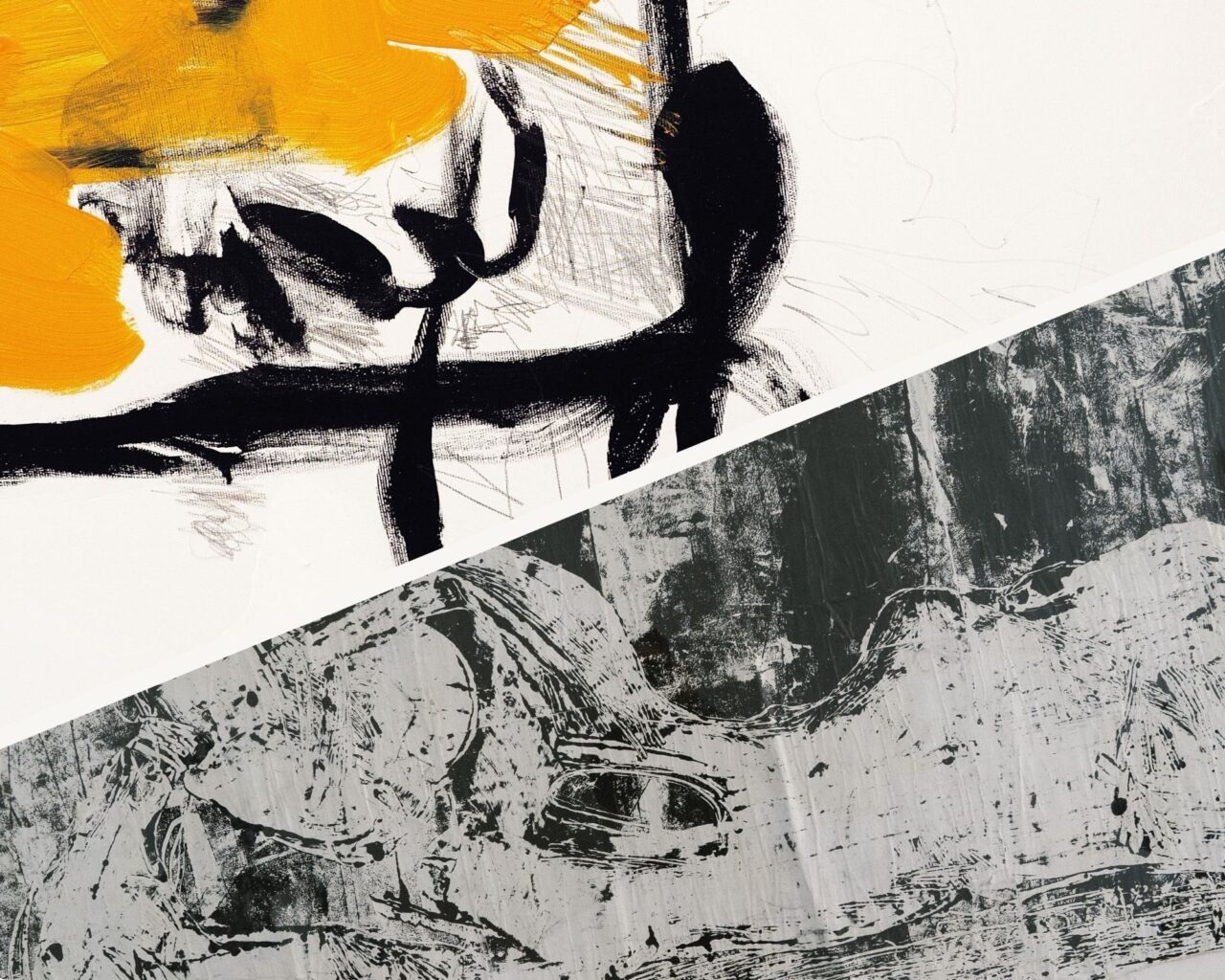
Kärt Hammer & Simon Sebastian Laumann. Hoarder
Until 29 June
Sometimes, it’s not about creating a work of art out of nothing, but about clearing it out of something. Kärt Hammer and Simon Sebastian Laumann are archaeologists. They ride into the visual noise of strokes and scratches, squares and motifs, forms and squiggles. They ride into the place where it’s bubbling and boiling, where there is a scream of colours behind every corner, a geometric intervention, where someone has scratched the wall with their nails – and their job is to clean out the right form, spot, splatter from it all with their brushes and handpicks.
Kärt Hammer has often exhibited her minimalist paintings of black and more black. Splashes of yellow, scrawls that came from God knows where and prehistoric spots emerge from underneath the black. Hammer has never been able to be a very precise artist: it is doubtful whether she can even draw a straight line, let alone manage precise mapping of painting surfaces or “sensitive blending.” Simon Sebastian Laumann comes from Europe and his layers of painting have just as much spontaneity, but also a hint of cultural history.

19th Tallinn Print Triennial
21 June – 31 August, Tallinn Art Hall’s Lasnamäe pavillion
The exhibition focuses on the art medium of printmaking through the lens of media archeology. This exhibition focuses on the culture of memory: the means through which information and knowledge are stored, marking different technological stages – from the impulse to leave a trace to the information glut and the resistance to produce it. The Triennial continues its traditional role as an innovator in the field of graphic arts, critically analysing developments in the visual arts and visual culture in the local art field.
Tallinn Print Triennial will culminate on 29 August 2025 at Lindakivi Cultural Centre with a closing event featuring experimental time-based works in sound, spoken word, and video art. Participating artists: Siim-Tanel Annus (EE), Zuza Banasińska (PL), Mirtha Dermisache (AR), John Grzinich (EE/US), Maria Erikson (EE), Doris Hallmägi (EE), Semjon Hanin (LV), Lauri Koppel (EE), Maija Kurševa (LV), Lauri Lest (EE), Maria Mayland (DE), Dzelde Mierkalne (LV), Anna Niskanen (FI), Algirdas Jakas (LT), Tõnis Jürgens (EE), Anne Rudanovski (EE), Ülo Sooster (EE), Anastasia Sosunova (LT), Viktor Timofeev (LV), Gintautas Trimakas (LT), Taavi Villak (EE).
ESTONIA, Tartu
Tartu Art Museum
Photo: Madis Palm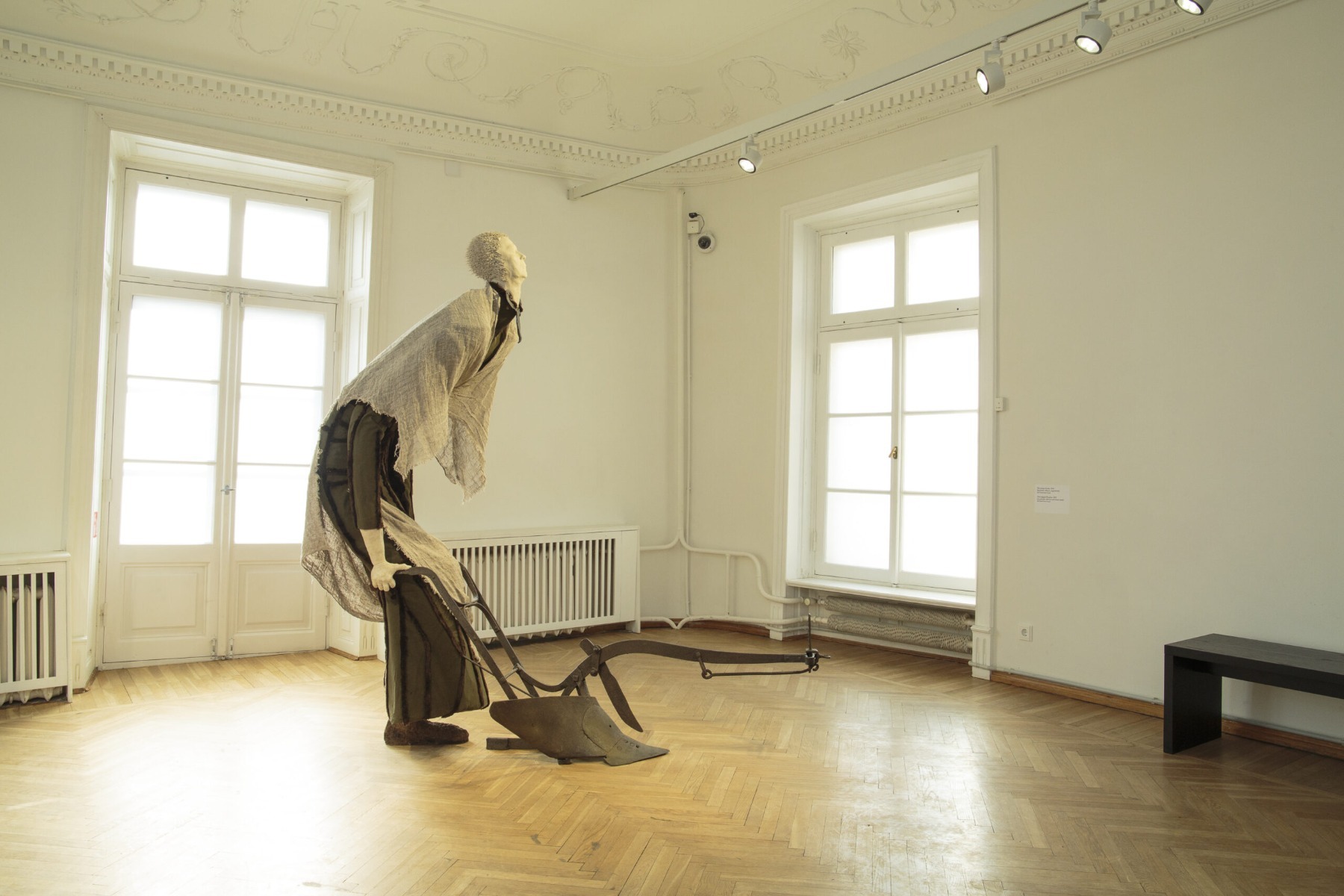
Terje Ojaver. Serpent
Until 28 Spetember
Terje Ojaver, a classic of contemporary Estonian sculpture, is opening the new solo exhibition Serpent at the Tartu Art Museum on 8 March, displaying the very latest of her work and a selection of her earlier creations. Terje Ojaver’s sculptures speak of life as a challenge that must be faced. A giant woman armed with a pitchfork is ready to defend her home and children, yet she is fully aware of the dual purpose of her weapon. She knows that a corpse is essentially fertilizer, worm food: the beginning of new life.
By surrendering themselves to the cycles of nature, the figures in Terje Ojaver’s work rise above the self-indulgent absurdity of human activity. They are saints. However, Ojaver’s animalism does not draw inspiration from shamanism; it is instead modernist, classic and the work of a trained sculptor. Just as nature serves as a religious imperative for Ojaver, traditional craftsmanship forms the ethical foundation of her artistic practice. Art must be good, and its contents must align with the laws of nature.
LATVIA, Riga
Ruudu Ulas, from the series "Complex Objects", 2021-2025
Riga Photography Biennial NEXT 2025
An international contemporary art event analysing visual culture and artistic representation. Biennial is focusing on young and promising artists from the Baltics and other Nordic countries, as well as European countries in general, who are in the early stages of their creative careers. Programme also includes educational events. The program of 2025 Biennial examines various aspects of the main theme 'invisible but present'. The central events of NEXT 2025 are two Awards—'Seeking the latest in photography!' and 'Emerging Curator!'—which young artists and curators of all three Baltic countries are invited to enter.
Key exhibitions of the Riga Photography Biennale NEXT 2025:
25.04-06.06. 'Pilot' Experimental Art Space of the Art Academy of Latvia (Kalpaka bulvāris 13) – NEXT 2025 'Emerging Curator!' award-winner Roberta Atraste's exhibition 'The Bureaucrat Who Secretly Reads Poems'.
26.04.-30.05. ISSP Gallery (Berga Bazārs, Marijas iela 13 k.3) – Solo exhibition of the winner of the NEXT 2025 Award 'Seeking the Latest in Photography!': Ruudu Ulas's 'Difficult Objects'.
30.04. 18:00 ISSP Gallery (Berga Bazārs, Marijas iela 13 k.3) – Lecture 'What is Next? The 'landscape of Polish Photography Today's by Adam Mazur.
09.05.-06.07. Riga Contemporary Art Space (Kungu iela 3) – Lesia Vasylchenko's solo exhibition 'Chronosphere'.
16.05.-29.06. Smilga Culture Space (Eduarda Smiļģa iela 34A) – Group exhibition 'Neurons Desperately Seek Each Other'.
31.05.-01.08. Gallery ALMA (Tērbatas iela 64) – Vika Eksta's solo exhibition 'Funeral in Sloboda'
Latvian National Museum of Art

The exhibition of the Purvītis Prize 2025 finalists
Until 8 June
The exhibition consists of an impressive collection of paintings, graphics, sculptures, objects and installations, created by eight artists and artist collectives nominated for the ninth Purvītis Prize by independent experts. The artsts are: Indriķis Ģelzis, Romāns Korovins, Ieva Kraule-Kūna, Inga Meldere un Luīze Nežberte, Luīze Rukšāne, Krišs Salmanis, Elza Sīle, Paula Zvane.The Purvītis Prize is the largest and most prestigious award in the field of visual arts in Latvia. It was established in 2008 with the aim of regularly and systematically focusing on current events and evaluating the most outstanding achievements in professional Latvian visual arts.The curator of the exhibition is Daiga Rudzāte. The winner of the Purvītis Prize 2025 will be named on May 23, 2025.
Head of the panel of experts Arta Vārpa commented: “The finalists’ exhibitions stand out with their intense messages, tying their art to acute global issues. Several of the projects are permeated with a sense of global and individual threat; artists also offer strategies for overcoming hard times and apocalyptic scenarios.”
Helmet masks. Mende ethnic group, Sierra leone, Liberia. 20th c. Wood, raffia fibre, natural due. Tukku Magi collection. Publicity photo
Tukku Magi: Rhythm’s
13 May – 7 September
The exhibition Tukku Magi: Rhythm’s is a celebration of shared human experience, expressed through the universal language of art. It demonstrates how different styles, influences, and cultural perspectives can come together to create a multifaceted view that resonates with people on a deep, emotional level. Rhythm embodies the essence of artistic collaboration and the beauty that emerges when diverse voices are brought into conversation. It is not just music or dance movement, but also the rhythm of life, nature, and relationships between people. The world is in motion, creating rhythmic dialogues between the local and global, personal and public, authentic and constructed, humans and nature, between prejudice and openness to diversity.
Every artist in the exhibition contributes their individual story connecting with Africa and their own unique conception of rhythm. The display includes objects of African traditional art from the Tukku Magi collection, in conversation with contemporary artists, including Moffat Takadiwa (Zimbabwe), Dickens Otieno (Kenya), Jānis Jākobsons (USA / Latvia), Zoya Frolova (USA / Latvia), Nick Brandt (UK), Fernando Anuang’a (Kenya), and artist group James Muriuki (Kenya), Olga Kisseleva (France), James Mweu (Kenya), Margaret Ngigi (Kenya).
Ola Foundation

Miervaldis Polis: A Keyhole to Paradise. The Wanderings of an Egocentric
Until 1 September
“The egocentric person is an irony of human nature, not a glorification of it. It is about being ironic concerning oneself, not something else.” So says artist Miervaldis Polis – who currently lives in the countryside near Kuldīga and no longer participates in public events – during our telephone conversation. His previous life in Riga was a stark contrast to that of today, as he was one of the shining stars of the Latvian art scene up until the early 2000s. He could almost always be found sitting at a table at the M6 café, a popular haunt of artists up until its closing in 2003. Painter, performance artist and theorist – one could say that he purposefully created his life as a performance. This was the case both during his public walks as The Bronze Man, arguably his most well-known work, as well as beyond. Polis even famously appointed himself a member of the nobility and set up his own memorial room in the most prestigious art space of the time, Rīgas galerija. He loved to play pool, and is even rumoured to have been a professional casino gambler for a while.
Miervaldis Polis is undoubtedly one of the most striking and peculiar personalities in Latvian art history of the second half of the 20th century. This exhibition focuses on a particular facet of Polis' oeuvre, seeking to explore his beloved “utopian realism”, the routes of his wanderings, and the characters he encountered while there; it concentrates on his “spectacle”, as he himself terms the genre of performance. Works featured in the exhibition are from the collections of Jānis Zuzāns, Guntis Belēvičs, and Ainars Gulbis.
More info>>
Kim? Contemporary Art Centre

Jānis Dzirnieks: Healthy Friends
Until 8 June
Kim? Contemporary Art Centre presents Jānis Dzirnieks’ second solo exhibition at the institution, following the artist’s two-month residency at ISCP, New York in the autumn of 2024, as the recipient of the Kim? Residency Award. In New York, small corner stores — bodegas – can be found on almost every block. One such store, called Healthy Friends, offers sandwiches and fast food that are far from anything actually healthy. Yet the names of these establishments often include words like healthy, natural, organic, and other slogans praising naturalness – phrases that serve no purpose beyond drawing attention to a product range oversaturated with chemicals. The works in the exhibition include scanned scribbles and watercolor drawings, later digitally enhanced, printed, and then physically modified.
These drawings depict various creatures in stages of decay and decomposition, merged with illustrations of refrigeration system optimizations. In a way, the process of decay can be seen as a form of optimization – much like the creation of these works could be viewed as a kind of self-reprocessing. Optimization, as such, is inevitable in both living and non-living organisms, as well as in economics, politics, sociology, and beyond. The prevailing high level of distrust in bodegas – from overpriced trivialities to the tastiest snacks – serves as a fitting metaphor for Dzirnieks’ reflections on themes of technological efficiency and environmental degradation, which are explored within the exhibition through elements of spatial installation and other objects created specifically for the show.
Zuzeum Art Centre
Erwin Wurm: How It Is
13 June – 14 September
Austrian sculptor Erwin Wurm’s first solo show in Latvia! Erwin Wurm (b. 1954, lives and works in Vienna and Limberg) is considered one of the most influential European sculptors of the last few decades. How It Is collects his works from different periods, presenting a unique perspective on the artist’s singular mix of figuration, philosophy, and the absurd.
Armed with a motto of “everything is connected to everything else”, Erwin Wurm thinks of the human body as a malleable, open-ended connector between the organic and the human-made, the perks of consumer culture and the stalemates of conspicuous consumption. The title of the show is lifted from Irish playwright and Nobel laureate Samuel Becket’s 1962 novel. The eponymous sculpture (2024), one of the more complex pieces the artist has made, belongs to the series of One Minute Sculptures that Wurm has started in late 1990s. This series offers the audience the possibility to transform themselves into a living sculpture by following the artist’s specific instructions and performing simple exercises with everyday objects. A selection of One Minute Sculptures is complemented by several photographs under the title of One Minute Photographs, showing the sculptures in the state of activation. A number of iconic images takes centre stage in the exhibition. But the most recent body of work in the show, Substitutes (2024), is a continuation of Wurm’s long standing interest in clothing as a volume that both holds the body and creates a set of meanings for its owner. The monumental scale of Substitutes, made from thin sheets of painted aluminium, presents the garments as having character in themselves, divorced from the wearer’s personality.
Riga Contemporary Art Space
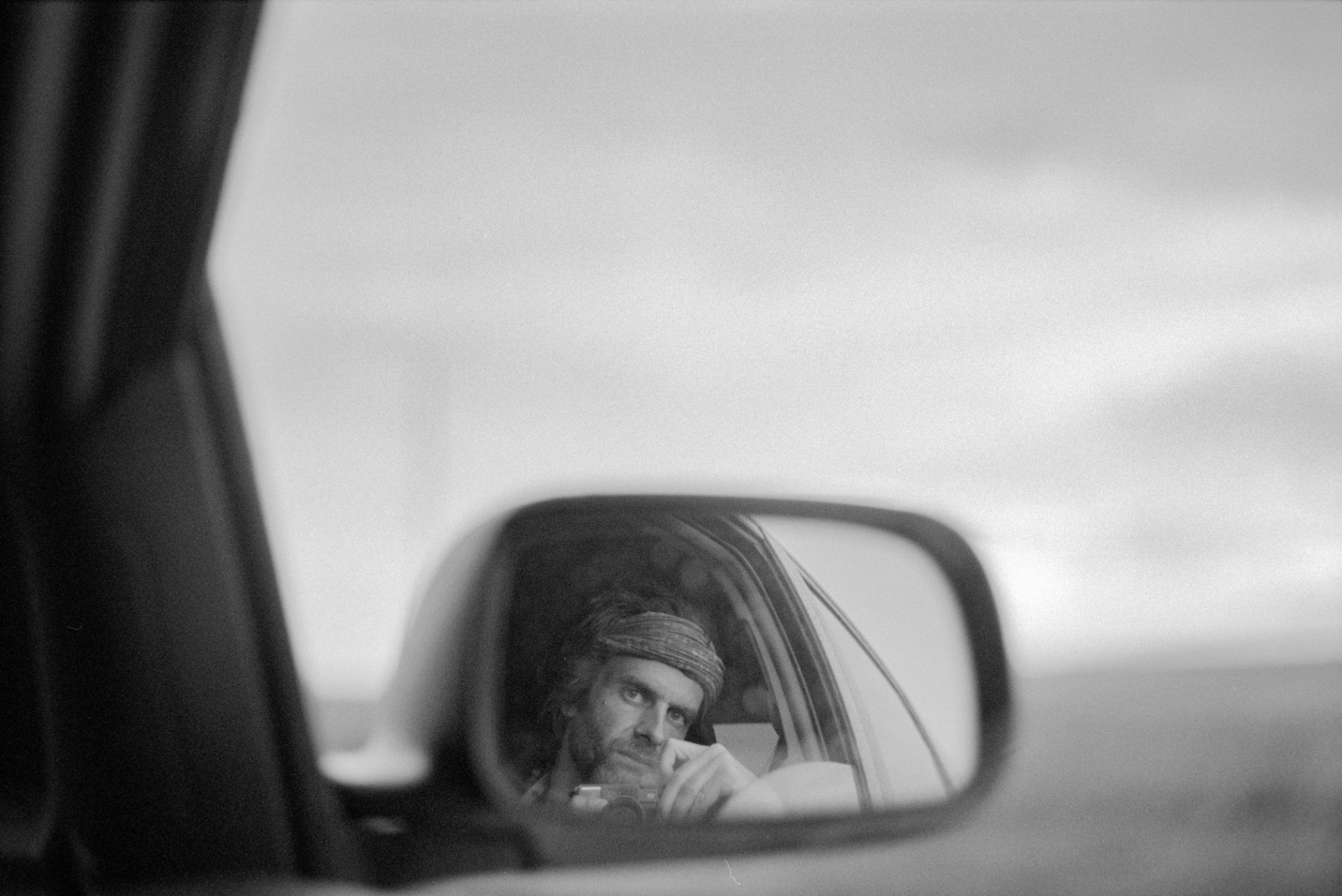
Siegfried. Nomadic Cinema
Until 8 June
The exhibition will offer an insight into the work of Sig (Siegfried Debrebant), a French composer, musician, film director and traveler of worlds. Although Sig's sudden death last autumn has radically altered the process of making this exhibition, and most likely the way we look at his oeuvre, which now is revealed in its totality, it is a full-fledged emanation of his ideas and presence. The exposition is centered around the film Kinogamma I & II, which is more than two hours long masterpiece of ecstatic world view. It is complemented by black-and-white analog photographs taken during Sig's wanderings, which can be viewed both as a supplement to his cinematic vision of the world, as travel notes, or as an artistic inquiry into the mysteries of the human dimension.
Sig's film and photo works are permeated by an undisguised, perhaps even romantic fascination with the mundane, almost invisible substance of the human existence. The image appears here as a witness and interpreter of mysteries of time and being, where Bresson's "decisive moment" merges with the Mythical time in which all the present, past and future coexist, where the evanescent and timeless are intertwined into one inextricable totality.
Māksla XO Gallery
Marigold. 2025, acrylic resin, colour, D-103 cm, H-9 cm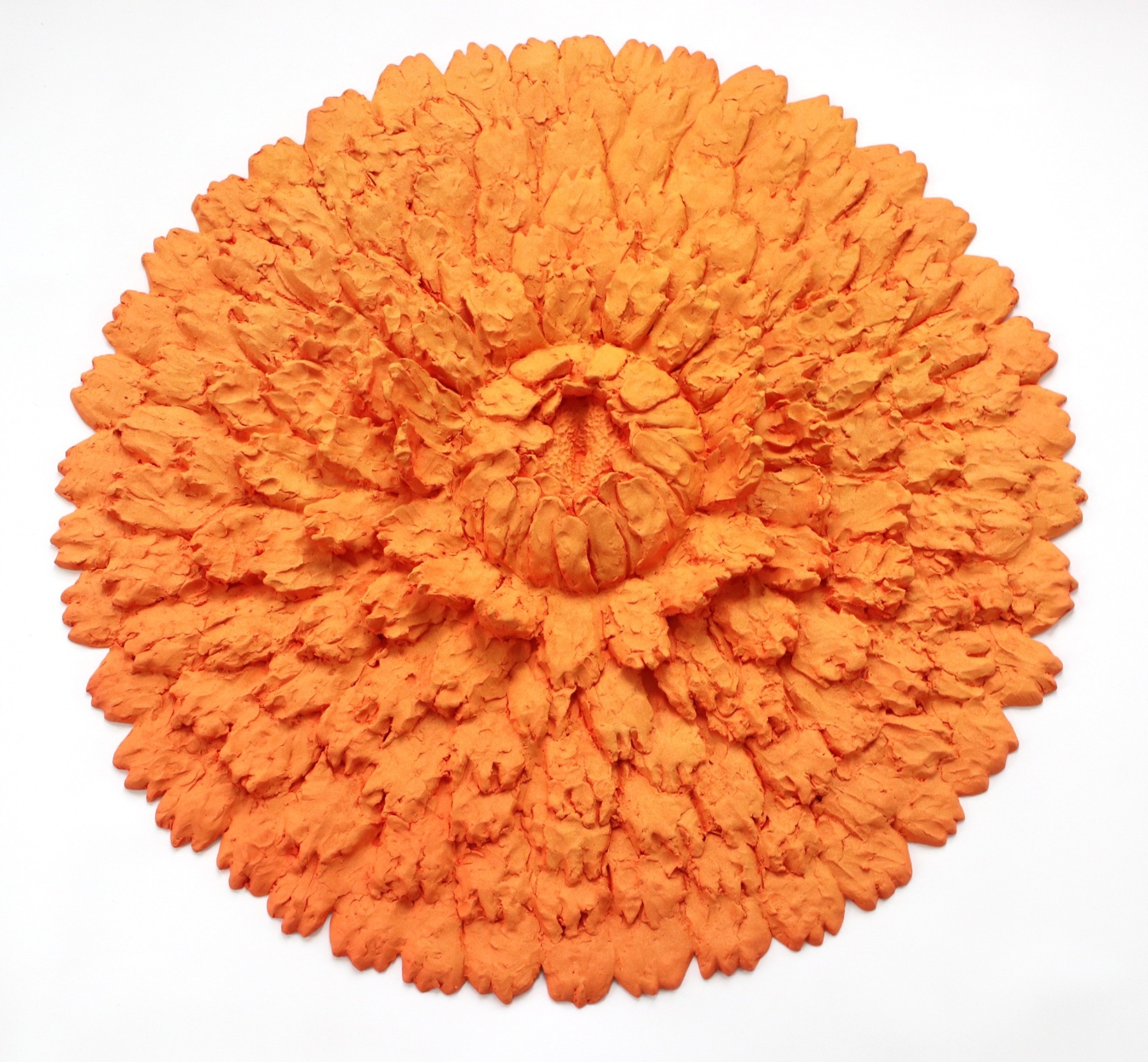
Liene Mackus: Warm Meadow
15 May – 28 June
Liene Mackus’ latest solo exhibition, “Warm Meadow”, is a continuation of her previous plant-related projects. The exhibition takes visitors on a journey through the meadow, as imagined by the artist during sleepless nights or moments of deep thought. Liene Mackus’ field of study in this project is a real meadow in the countryside, where she observes the plants, imagining them as objects and trying to sense their scent. By picking plants for herbal teas and herbariums, she seeks to embody the images of these plants in her dreams. She also explores plant pollen and the processes of pollination, reproduction, division, and wilting. This observation recurs year after year, like a dream, in which the artist expands her idea of plants as objects.
Liene Mackus metamorphoses plants into abstract objects by enlarging them and isolating their details from their context. The artist equates and compares their forms to her own body, organs, and textures. By altering their proportions, she creates a new perspective. This shift in perspective could be compared to the horizon line as seen by an ant or a spider. Liene Mackus pays special attention to vulnerary plants, which have helped humanity for centuries. By highlighting their importance, she symbolically creates sculptures as monuments to these plants.The exhibition “Warm Meadow” also reflects Liene Mackus’ personal experience with gardening, which has become a form of meditation and an expression of care.
Galerija ASNI

Agate Tūna: Voltentity
Until 1 June
In the exhibition “Voltentity”, Agate Tūna focuses on quartz crystal as a mediator of spiritual energy and technological environment, continuing the research of the ghost in photography initiated in her previous projects ("Techno-Spectre"). In her latest series of works, Tūna has created a visual diary of visible and invisible sensations, tracing the ability of energy, memory and identity to transform under the influence of technology. The title “Voltentity” combines the words 'Volt' (voltage) and 'entity' (essence), reflecting the dual nature of the quartz crystal as both a conductor of spiritual energy and an integral part of the contemporary technological environment.
Riga Art Week
26 May – 1 June
Riga Art Week (RAW), an exciting new city-wide art festival, aims to foster collaboration among art institutions, galleries, and creatives, highlighting Riga’s role as a new cultural hub. With a diverse programme catering to art professionals and the broader public, RAW offers a vibrant platform for contemporary art, cultural development, and public engagement, reinforcing Riga's image as a creative and evolving city.
The week-long festival will feature a diverse range of events and activities. 26, 27, and 28 May: The first half of the week will be dedicated to art and culture professionals, offering panel discussions, networking events, and workshops aimed at fostering professional growth and collaboration opportunities. 29 May: Gallery Late – more than 20 galleries and art spaces will remain open until late, offering exclusive events including curator-led tours, meetings with artists and the opportunity to network with members of the art community in an informal, relaxed atmosphere. 30 May: RAW will officially open with a special event featuring well-known artists and special guests - Emilija Škarnulytė (Lithuania), duo Domenique Dumont (Latvia), Kitty Florentine and Viktoria Martjanova (Estonia) - kicking off a weekend filled with art, culture and conversation. 31 May and 1 June: Various exhibitions, workshops, talks and pop-up events will be held across the city, including the Latvian Centre for Contemporary Art's 25th anniversary programme, and special programmes for families with children at the Latvian National Museum of Art.
LATVIA, Madona
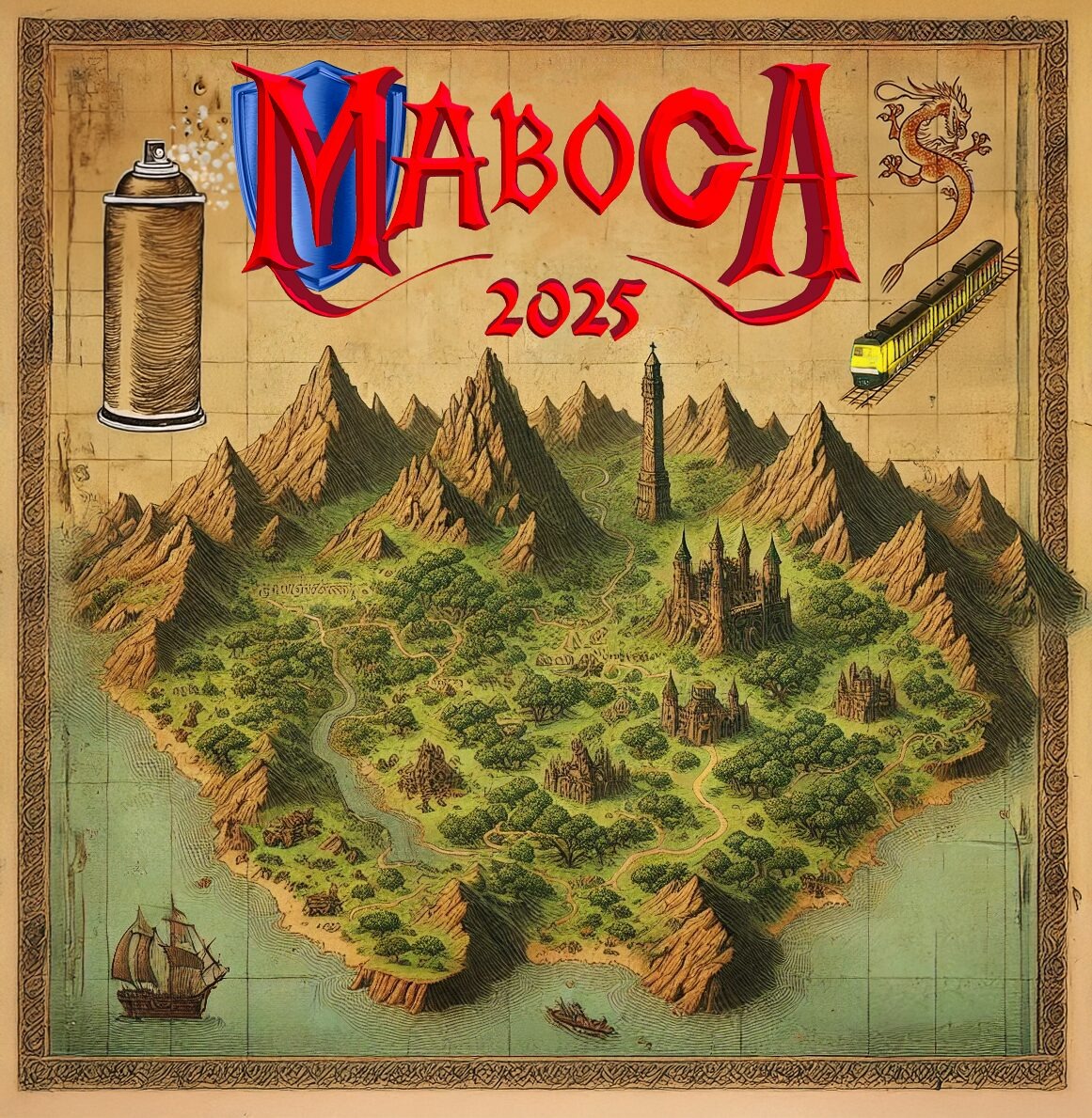
The 4th Contemporary Art Biennale – MABOCA 2025
24 May – 15 July
From May 24 to July 15, MABOCA 2025 – the 4th Madona Art and Business Biennale – will take place in Madona. The event will offer an eclectic and multidimensional program of contemporary art and music, combining exhibitions, performances, concerts, and special events in unexpected urban locations. This year, more than 20 internationally recognized artists from Latvia and abroad will participate in the festival, creating original works specifically designed for this event and the unique locations where they will be displayed.
Visitors will have the chance to experience performative and visual artworks in locations such as the Madona bus park, the Wonder Train on the Rīga–Madona route, the MABOCA gallery Visuma Centrs 2, the Madona bus station, the Madona railway station, the second-hand clothing store “dgs,” and various other public spaces around Madona. The adventure will kick off on the platform of Rīga Railway Station, where the Wonder Train will be welcomed with surprises prepared by Dainis Rudens, Cherry Blaze, Sheriff and Deputy, as well as Andris Eglītis. On the same day, Reinis Hofmanis’ solo exhibition will be opened at the MABOCA gallery Visuma Centrs 2 in Madona. The group exhibition “dgs dream 2” at the second-hand store “dgs” will feature Anna Ceipe, Jānis Dzirnieks, Maija Kurševa, Kaspars Groševs, Uģis Albiņš, and Elza Lapiņa. The scenographic design will be curated by Kristiana Marija Sproģe. A solo exhibition by the artist collective Shady Ladies will be opened at the bus station, and Andris Eglītis will present an exhibition at the railway station. Sculptor Anna Egle will create a new large-scale sculpture for the festival.
LITHUANIA, Vilnius
Contemporary Art Centre (CAC)
Where Unravelled Tongues Whisper
3 June – 8 June
The Contemporary Art Centre (CAC) stands in solidarity with the LGBTQIA+ community and, in the context of Baltic Pride 2025, presents the blitz exhibition ‘Where Unravelled Tongues Whisper’, curated by Vsevolod Kovalevskij. Running from 3–8 June at the CAC, the exhibition brings together the work of two artists – Marijonas Verbel and RB *Poodle* Moran. The interplay between their practices highlights distinct approaches to identity, culture and the creative process.
Marijonas Verbel often works with textile art and craft. To reveal the creative process itself, they exhibit notes written during the act of creation alongside their woven works – fragments that emerge spontaneously, like annotations, allowing the viewer to engage more closely with their thought process. Their textile installation Unravelled Tonguest, presented in the exhibition, explores themes of language, control and personal experience, reflecting on the tension between expression and enforced silence. Influenced by both personal and political events, Verbel invites reflection on the complex relationship between identity and language.
Exhibition view: Les Frontières sont des animaux nocturnes / Sienos yra naktiniai gyvunai, KADIST Paris, 2024-2025. Photo by Vinciane Lebrun - Voyez-Vous
Borders are Nocturnal Animals
12 June - 14 September
Following its first iteration, presented simultaneously at KADIST Paris and the Palais de Tokyo in autumn 2024, the second chapter of the exhibition ‘Borders are Nocturnal Animals / Sienos yra naktiniai gyvūnai’ will take place this summer at the Contemporary Art Centre (CAC) in Vilnius.
Rooted in the geopolitical turmoil caused by the Russian war in Ukraine, the exhibition weaves threads between artworks included in the initial exhibitions in Paris and an extensive selection of artworks from the KADIST Collection. In this iteration, curators Neringa Bumblienė (CAC Vilnius) & Émilie Villez (KADIST advisor) will explore the regional colonial histories of Lithuania and beyond within a broader international framework, touching on issues including war scars, extractivism, ancestral healing, surveillance systems and diverse forms of individual and collective resilience.
The Radvila Palace Museum of Art
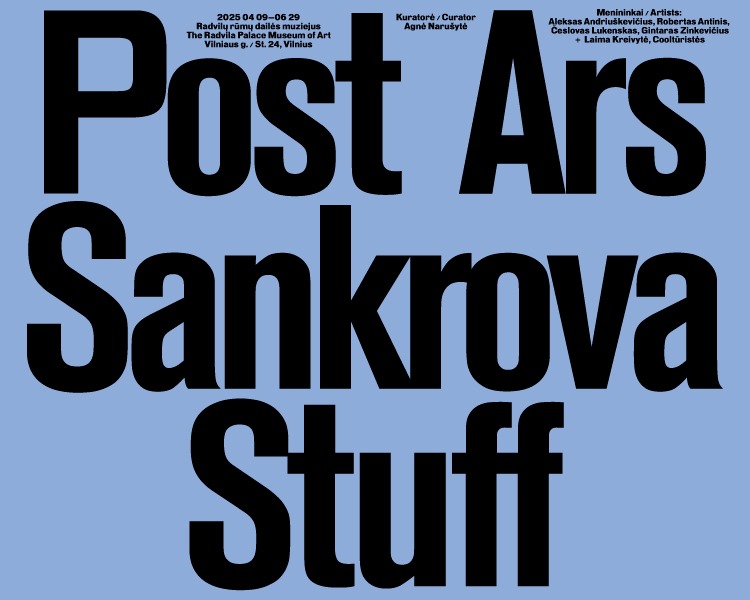
Post Ars: Stuff
Until 29 June
The exhibition brings back the rebellious and brave past of the group, also highlights the relevance of their creative output today. “The creative productions of Post Ars are hard to sum up – multifaceted and constantly shifting, they elude commonly used definitions, but are always recognizable for their untamed will to ask uncomfortable questions and distrust “the rules” of the art field. Post Ars emerged in Kaunas in 1989, when these young artists undertook to carry on the resolution of the interwar group Ars and start a new art epoch in Lithuania, at the time reemerging as a free state. They realized that “changes in art are pressing, so who else, if not us, is going to initiate them?”
From the outstart, the group Post Ars won the reputation of provocateurs – the 1990 group’s exhibition in The Installations of Kaunas’ Artists received a lot of attention, but met with the resistance from the artists’ community and was closed within a few days. The title of the exhibition was the first instance of the official use in Lithuania of the term “installation”; Post Ars also introduced, into Lithuanian contemporary art parlance the concepts of “performance” and “action”, the terms commonly understood today. Thus, this avant-garde-turned-classics artistic practice of the contemporary art holds a place of significance in the development of Lithuanian art.
MO Museum

GamePlay. Playing For Impact
Until 16 September
The fact that digital games have developed into a leading medium is nothing new. The social and aesthetic significance of this interactive and multimedia form can no longer be overlooked. Over 60 years have passed since the emergence of digital games and much has changed. Digital games have freed themselves from their origins as laboratory experiments and toys, becoming the defining medium of digital society. Positioned between pop culture, entertainment, and art, games now permeate every aspect of modern life. They shape how we learn, socialize, and perceive reality. Video games have increasingly attracted talented artists and independent developers who push boundaries and question established conventions in digital games and design, exploring unconventional subjects, aesthetics, and game mechanics.
By combining traditional art forms – graphics, film, animation, music, sculpture, and literature – digital games offer artists an unprecedented opportunity to communicate with audiences and have become a medium of artistic expression. “GamePlay – Playing for Impact” invites you to play, reflect, and learn more about the multifaceted forms that video games can take. This exhibition is a product of a collaboration with the ZKM | Center for Arts and Media in Karlsruhe, Germany and is an adaptation of their acclaimed gaming exhibition “zkm_gameplay. the next level”.
Vilnius National Art Gallery
Lidya Tarem in her studio. Unknown photographer. 1933–1935. Silver gelatine print. From the collection of the Estonian Museum of Photography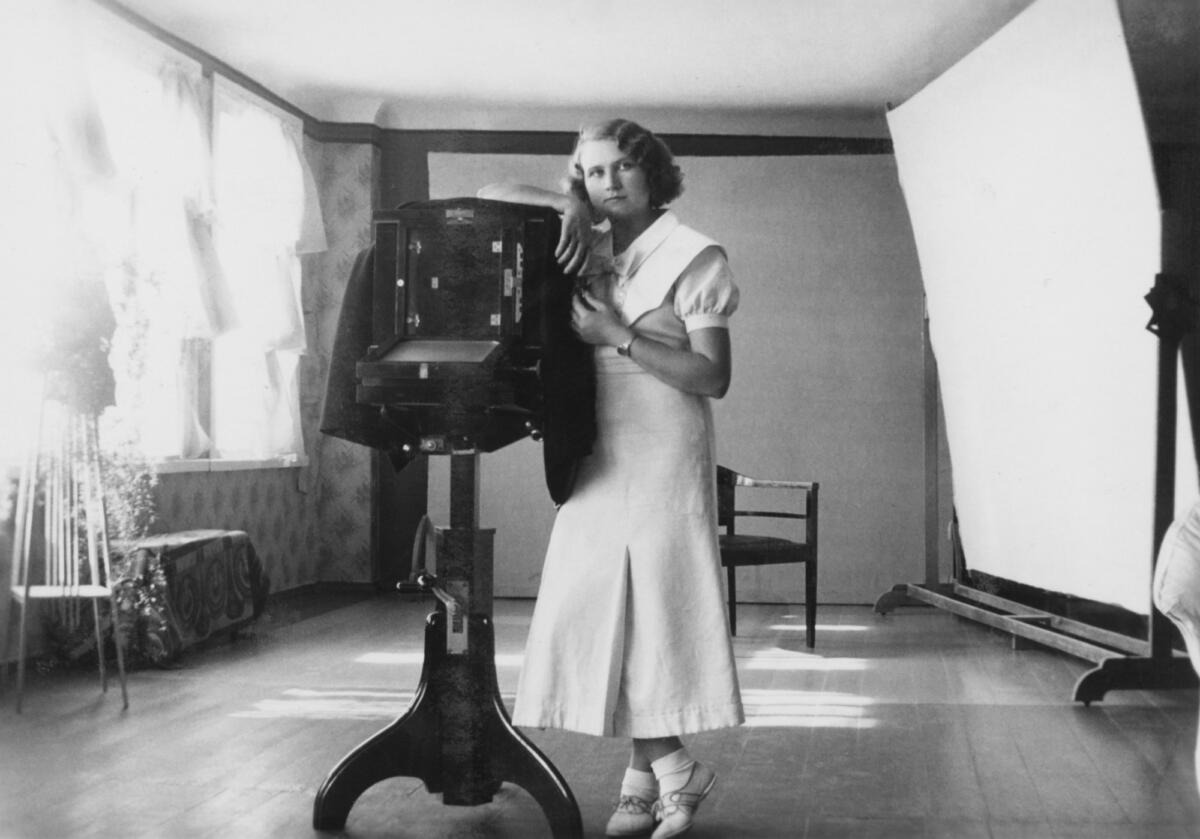
Silver Girls. Retouched History of Baltic Photography
29 March – 15 June
The exhibition presents a selection of works by twenty-one early women photographers from the Baltic States. Some of their stories significantly contribute to art history, while others serve as small but essential expansions of an existing view of our shared past. Placed in dialogue with contemporary artists (Marge Monko, Diāna Tamane, Goda Palekaitė) from the same region, mirroring each other between different centuries, practices, and topics, their stories become a part of a larger narrative of the development of photography.
When photography arrived in the Baltics, it quickly captivated the nobility, including noblewomen, who embraced it as a hobby. With the rise of commercial photography in the early 20th century, women found employment in the emerging industry. Though many of them worked in the shadow of their male counterparts - often as retouchers, copyists, or assistants - others managed to set up their own studios, shaping images of the world that would please the customer while actively participating in photography’s pursuit to become art. Silver Girls exhibition project first took place in 2020 at the Tartu Art Museum. It showed selected works by ten early women photographers from Estonia and Latvia paired with works by contemporary European artists contemplating our visual history’s lost and neglected aspects. Now, the initial selection of the photographers has been expanded, bringing together all three Baltic countries and their stories. Curators: Šelda Puķīte, Agnė Narušytė and Indrek Grigor.
Galerija Vartai
Geistė Marija Kinčinaitytė: Littered with Black Dust
6 May – 31 May
Through stories, images, maps, and speculations, the Moon became a place before we stepped on its surface. Since the late 1960s, it has also become a destination. Scientists studying planetary bodies transform these distant objects into places. Anthropologist Lisa Messeri calls this planetary ‘place-making’1: the process of narrating, visualising, mapping, and imagining them as habitable, either by humans or more-than-humans. The vastness of the cosmos becomes a stage for aspiration, scaled to the human experience and desire.
In Littered with Black Dust, Geistė Marija Kinčinaitytė exposes and reframes the act of ‘placing outer space’. Using photography, moving image, and post-photographic archives, the exhibition traces and speculates on how scientific infrastructures and imaging technologies have rendered the Moon intelligible. These works also interrogate the techno-utopian logics that frame it as a site of extraction. Cold, airless, and uninhabitable (for now), the Moon shifts from alien to familiar, creating a fleeting sense of intimacy, only to return us – again – to the eerie and unreachable.
Editorial Project Space
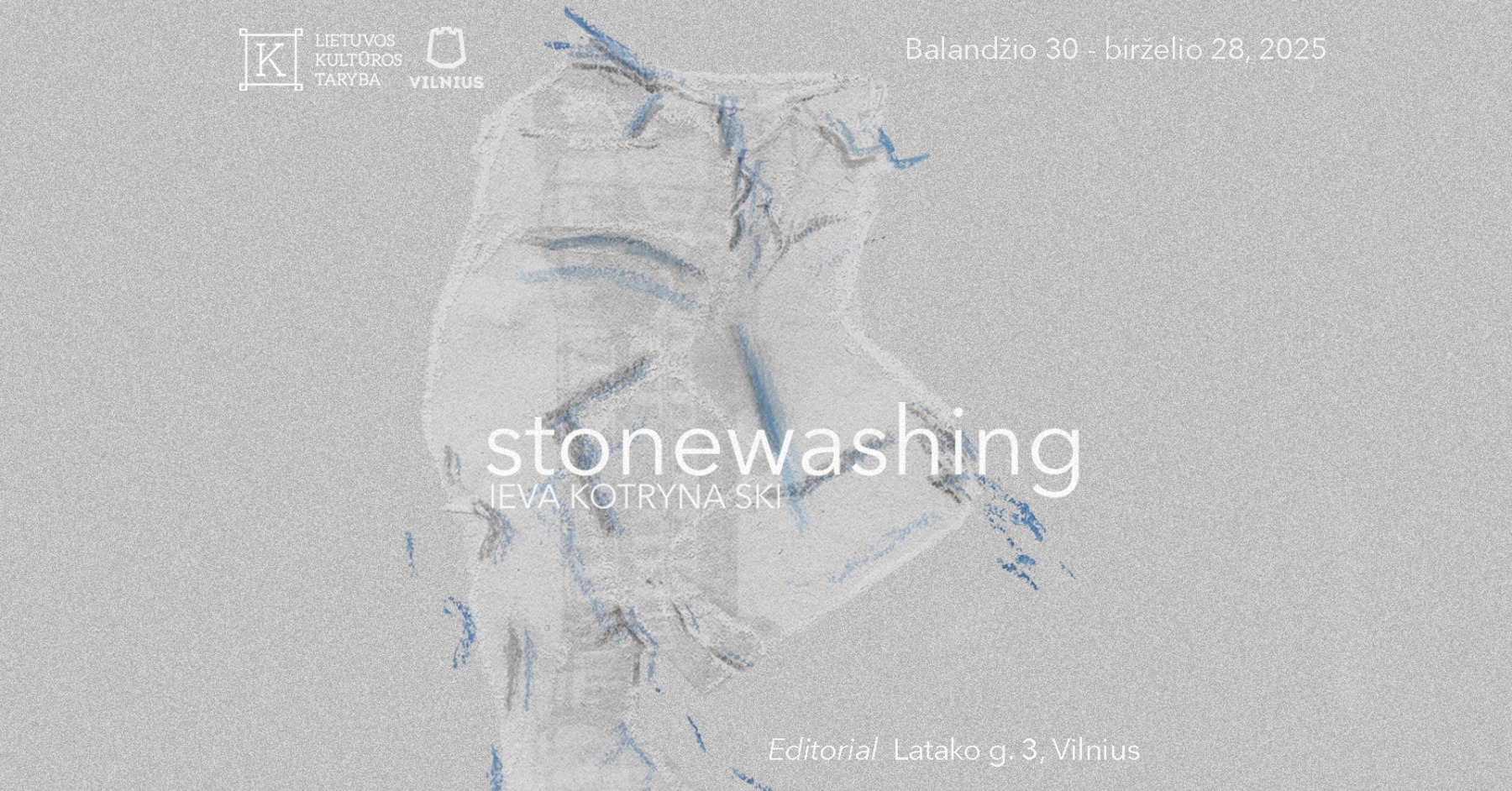
Ieva Kotryna Ski: stonewashing
Until 28 June
Since her earliest works, Ieva Kotryna Ski has been delving into geological processes and exploring the role of the digital image in shaping the human relationship with the environment. In her practice, geological terminology often becomes a starting point for exploring broader contexts – for instance, the word dyke, which in geology denotes the intrusion of one type of rock into another, while in queer vocabulary it refers to a lesbian person. Precisely this double meaning inspired the Dyke Into project, which sought to raise the visibility of queer people in public spaces in Vilnius. In her new exhibition at Editorial, the artist continues tracing the paths of the word dyke, this time focusing more closely on the geological process itself.
Her works weave together geological formations with personal and collective desires, as well as the overlays between banal and intangible materials. Reflecting on the different surfaces of the screen, the image, matter, or the earth itself, Ieva Kotryna Ski explores the fragile relationship with reality – one that often seems to slip through our fingers. Whether high or low quality, filmed or generated, the image is constantly deceiving us – much like the rocks that appear to embody solidity.
Pamėnkalnio Gallery
Elena Kanarskaitė: Wailing
Until 30 May
Wailing (funeral lament) is a farewell ritual that allows the mourner to sublimate their grief into a wailing song. The work immerses the viewer in a state of trance, in which grief becomes not only an inner experience but a part of the spatial structure that constructs the moment of nostalgia. Being in memory helps to search for a new hope, to let go of the past and to discover oneself. A postmodern human being, increasingly distant from their own nature, wanders in a simulated reality, where it is increasingly difficult to recognise what is real and what is not. When reality no longer contains the past, nostalgia takes on its true meaning. It testifies to an absence, a longing for something that may never have existed. The ‘Wailing’ invites us to linger in this liminal state – between the present, the past and the future, where time turns into reflection.
The installation is set up in the centre of the gallery. Its form conveys the idea of cycle, repetition and return. Sound, moving in a circle, is layered like a ceremonial choreography, enveloping space and the body. This form becomes not only architectural but also internal – the silent presence in the centre allows one to hear what is usually muted. The sonic part of the installation was created in collaboration with sound artist Viltė Gustytė.
Drifts Gallery
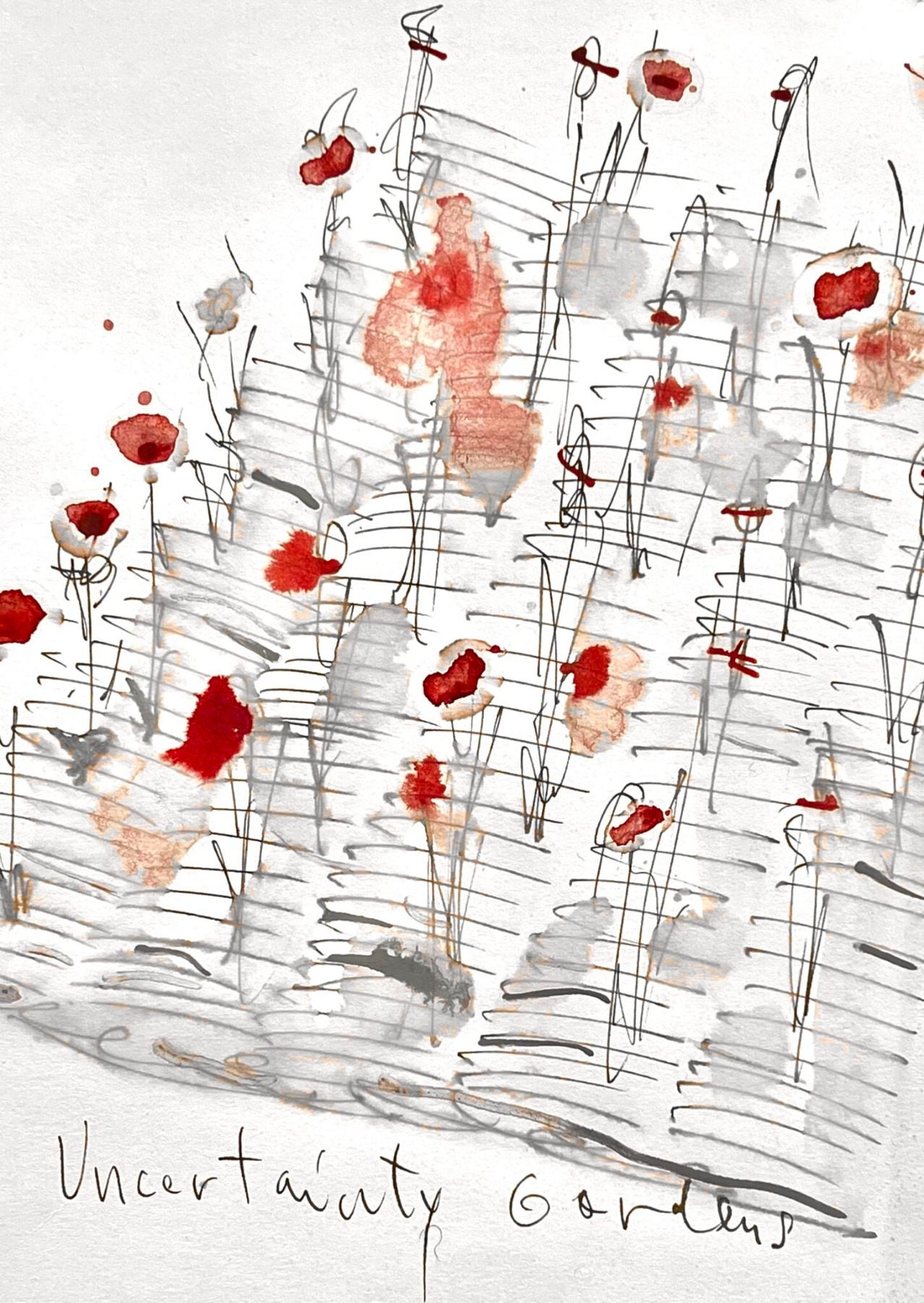
Vytenis Burokas: Uncertainty Gardens
Unil 27 June
For several years now, Vytenis Burokas has made a garden his studio. His homestead in Lauryniškės, a rural village in Širvintos district, 40 kilometers northwest of Vilnius, has become a physical terrain and a conceptual ground. There, tending and thinking blur. Fixing, placing, maintaining – each act becoming a quiet form of composition. Gardening, like drawing, unfolds in time. Working in the garden, Burokas began to blur acts of cultivation with processes of artistic inquiry. What began as an “expedition to the homestead in search of new artistic expressions” gradually revealed deeper drives: connecting with long-lost neighbors, gathering fragments of the past, and composing with memory as both material and method.
At Drifts, Burokas presents his second solo exhibition with the gallery. Drawings and living plant elements, cultivated in raised beds, some built for artworks, others repurposed from military crates, are dispersed throughout the space. The boxes evoke logistics and latent mobility: a tension between rootedness and readiness to move. Glass bottles of wild apple cider punctuate the installation, grounding it in quiet acts of transformation and offering. Indirectly, the works carry residues of the garden – material traces, stained surfaces, the imprint of repeated gestures. They do not depict the garden; they metabolize it. Some pieces are large, solid: wooden boxes reimagined as sites of cultivation and reflection, staging fragile drawings within and on top of their surfaces. Others are modest, almost shy, yet assert themselves with quiet persistence.
